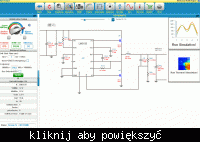3Deye
Full Member level 2

Hi,
This is the first time for me to design a power network and I do not have suitable resources to start my design so I made this topic.
I want to design a power network for an expansion card that will be connected to a computer, its source of power will be from the PC power supply molex.
This molex provides +12VDC and +5VDC. My circuit requires different power values (0.75V, 1.2V, 2.5V and 3.0V).
The circuit includes an FPGA and will be implemented on 4-Layer (or more!) PCB.
Examples of power circuits that I am looking forward to design: (look at the power section of the PCB)
https://www.techpowerup.com/reviews/Powercolor/HD_5570/images/front.jpg
https://www.techpowerup.com/reviews/HIS/HD_5850_iCooler_V_Turbo/images/front.jpg
How can I design such networks?! Resources ?
If any more info is needed to make my question clear just let me know.
Thanks.
This is the first time for me to design a power network and I do not have suitable resources to start my design so I made this topic.
I want to design a power network for an expansion card that will be connected to a computer, its source of power will be from the PC power supply molex.
This molex provides +12VDC and +5VDC. My circuit requires different power values (0.75V, 1.2V, 2.5V and 3.0V).
The circuit includes an FPGA and will be implemented on 4-Layer (or more!) PCB.
Examples of power circuits that I am looking forward to design: (look at the power section of the PCB)
https://www.techpowerup.com/reviews/Powercolor/HD_5570/images/front.jpg
https://www.techpowerup.com/reviews/HIS/HD_5850_iCooler_V_Turbo/images/front.jpg
How can I design such networks?! Resources ?
If any more info is needed to make my question clear just let me know.
Thanks.




